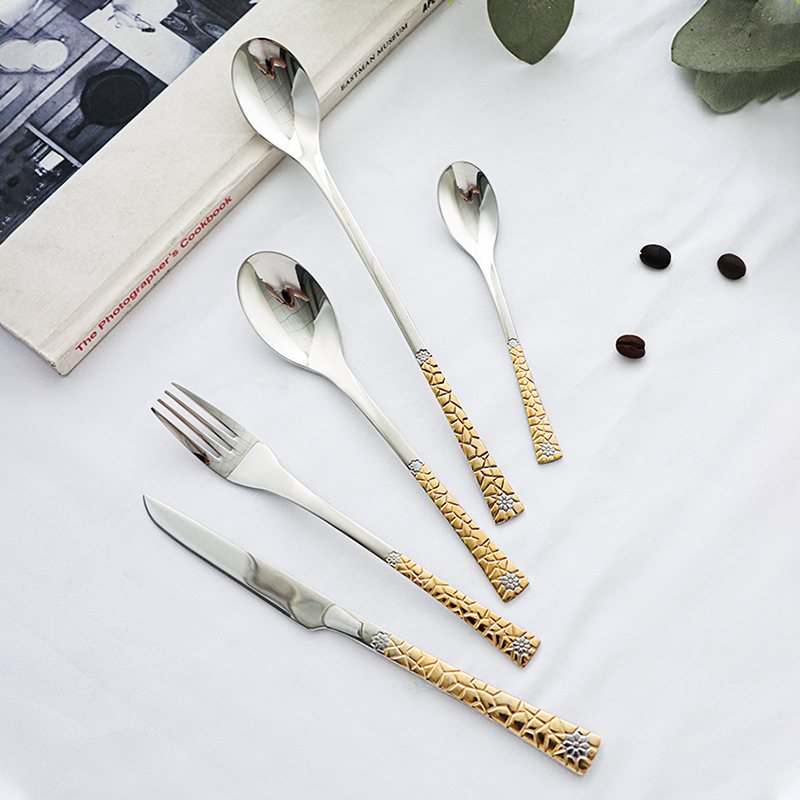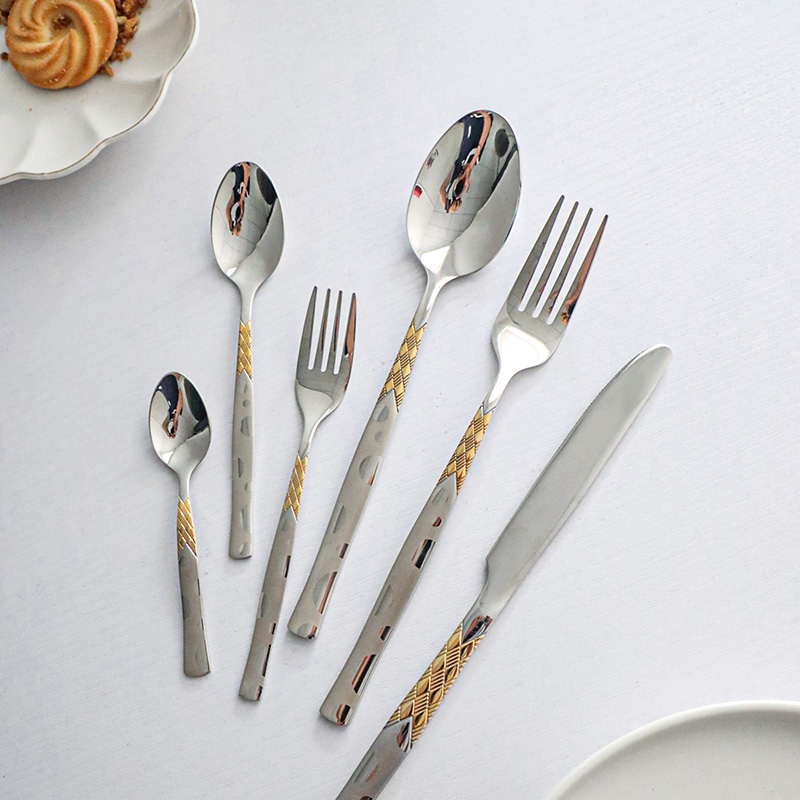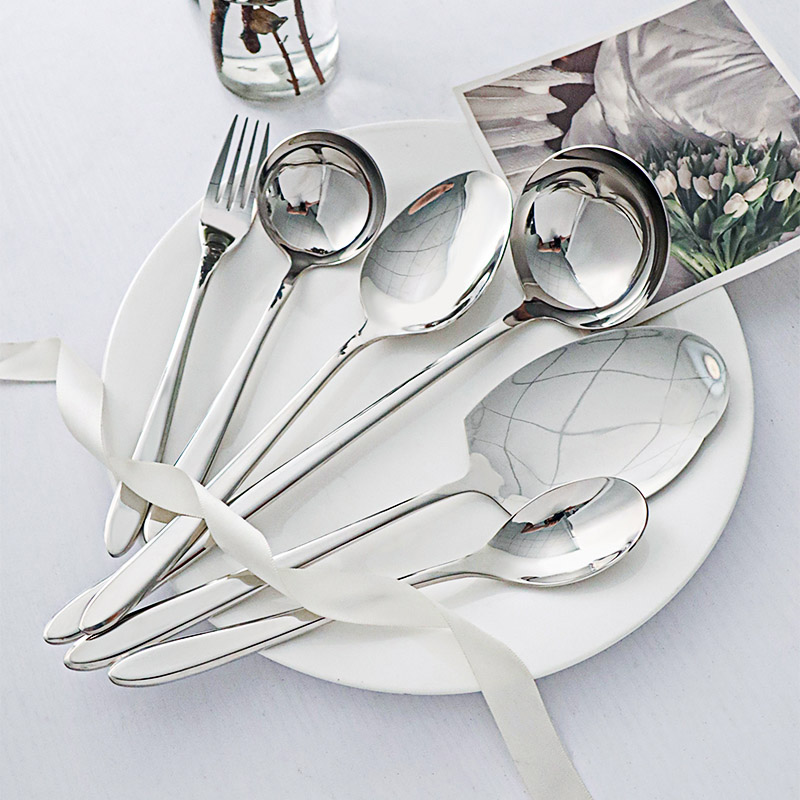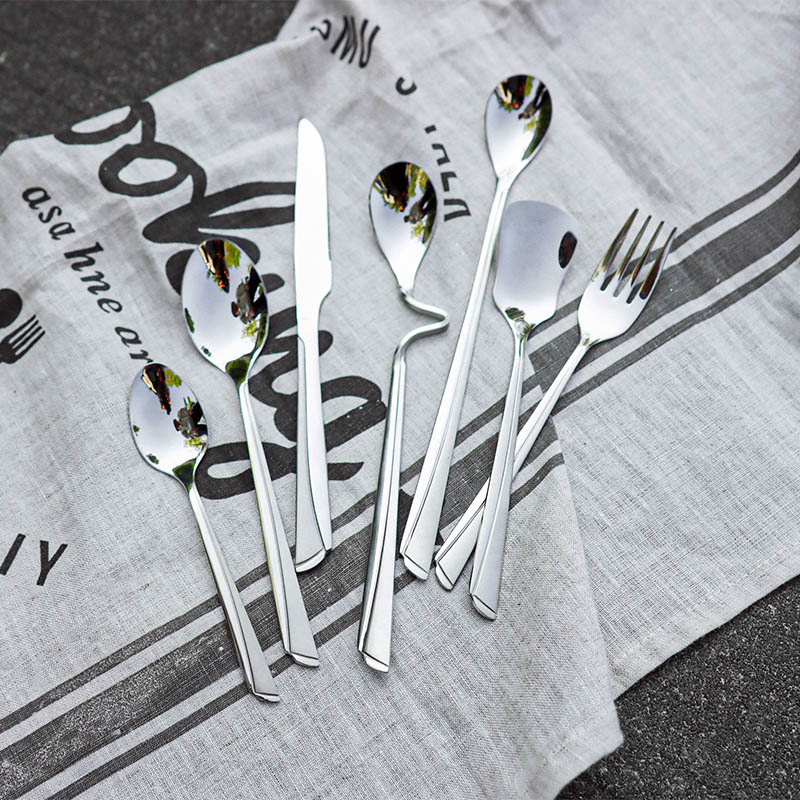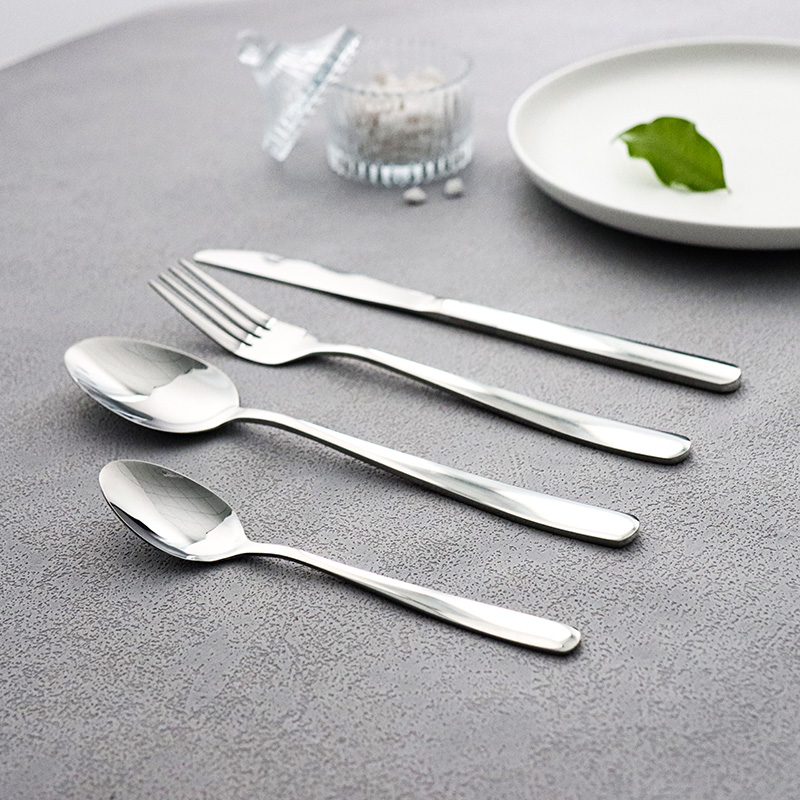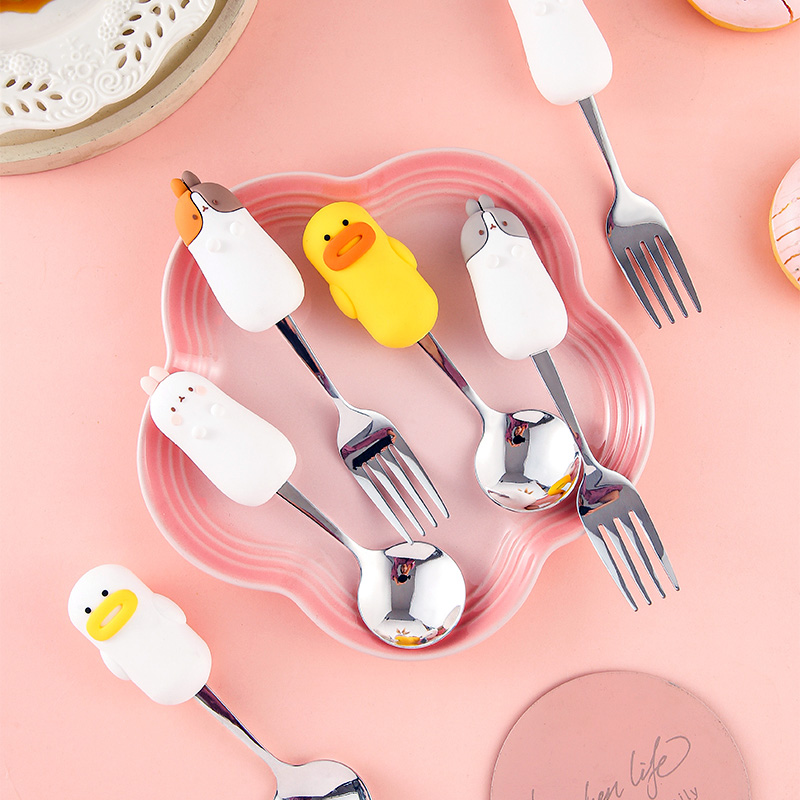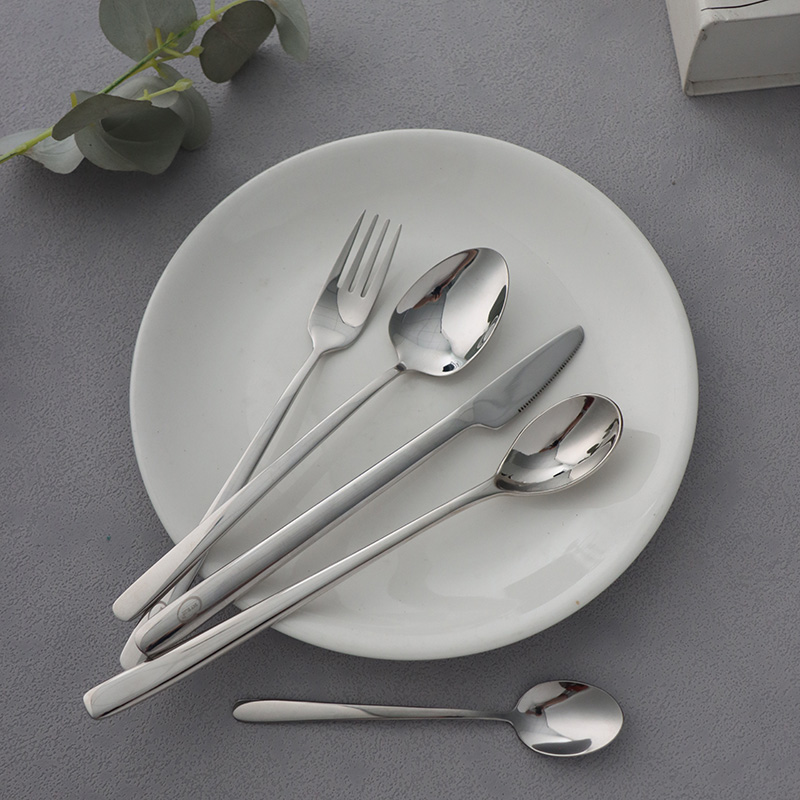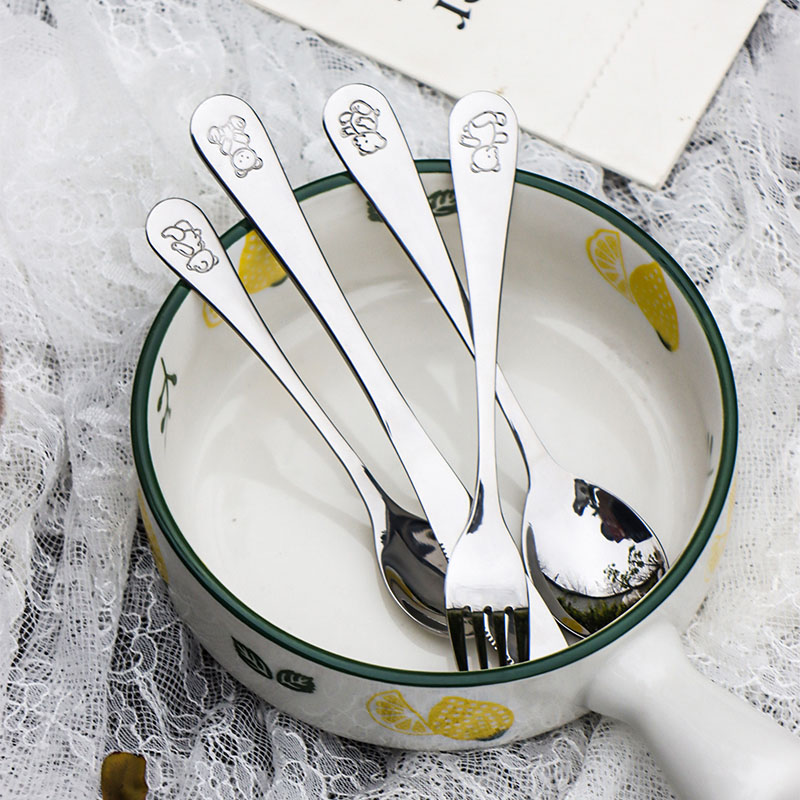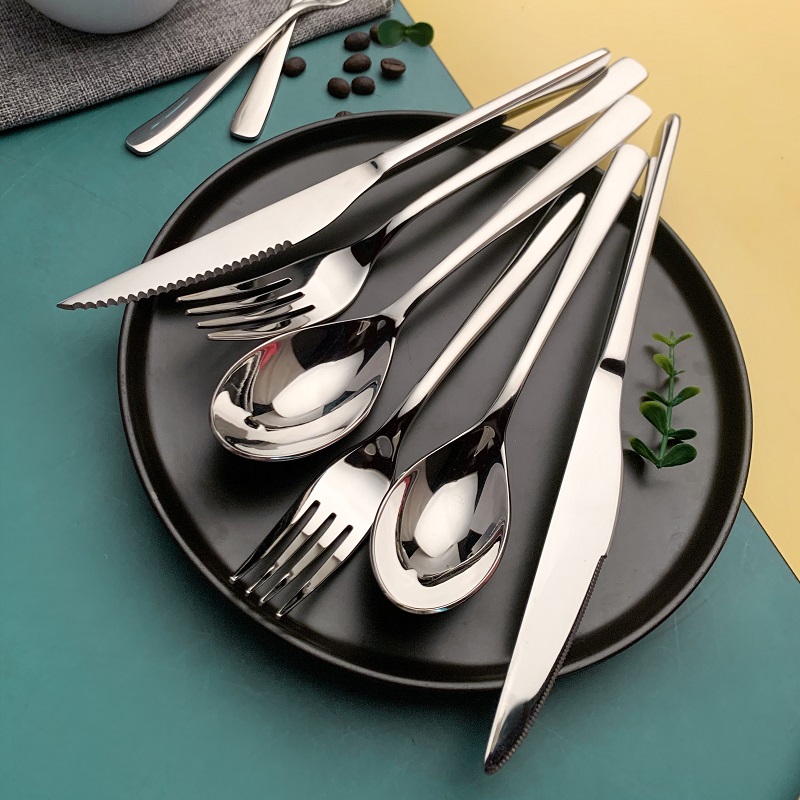Навалом 18 10 Плоская посуда
Ознакомьтесь с нашим фабричным ассортиментом плоской посуды Bulk 18 10, предлагающим разнообразные стили, настраиваемые варианты и исключительные цены. Повысьте свой вкус к обеду с помощью плоской посуды высшего качества уже сегодня!
Верхние категории
С 1993 года
ЦЯНЬСИНЬ Столовые приборы
Компания Jieyang Qianxin Stainless Steel Products Co., Ltd. была основана в 1993 г. и имеет более чем 25-летний опыт производства и поставки столовых приборов, кухонной утвари и посуды. Компания занимает площадь 6000 кв. м, располагает современным оборудованием и сотнями сотрудников. Мы ориентируемся на зарубежные рынки, включая Европу, Северную Америку и Ближний Восток. Мы предлагаем OEM и ODM услуги для наших клиентов ...

О столовых приборах 18/10
Виды столовых приборов 18/10
Столовые приборы 18/10 - это плоская посуда, кухонная утварь и сервировочные инструменты, изготовленные из нержавеющей стали. Обозначение 18/10 указывает на содержание хрома и никеля в стальном сплаве соответственно. Этот тип нержавеющей стали славится своей прочностью и устойчивостью к коррозии, что делает его отличным выбором как для повседневного использования в домах, так и в гостиничном секторе. Ниже представлены различные типы столовых приборов 18/10, сгруппированные по назначению:
- Столовые приборы
Столовые приборы включают в себя основные составляющие любого обеда: ложки, вилки и ножи. Ложки обычно используются для употребления жидких или мягких продуктов, таких как супы, десерты и хлопья. Вилки выполняют двойную функцию: ими можно придерживать пищу во время нарезки ножом или непосредственно подхватывать ее. Ножи предназначены для нарезания пищи на удобные кусочки перед употреблением или могут служить общими режущими инструментами.
- Кухонные столовые приборы
Кухонные столовые приборы включают в себя разнообразную утварь, в том числе ложки, ножи и другие необходимые инструменты. Среди них выделяется разделочный нож - маленький, универсальный нож, идеально подходящий для чистки овощей и фруктов. Хозяйственный нож, средний по размеру, подходит для нарезки и других кухонных работ. К кухонным столовым приборам также относятся сервировочные ложки, которые облегчают перекладывание пищи из кастрюль в тарелки.
- Сервировочные столовые приборы
Сервировочные столовые приборы - это столовые приборы, специально предназначенные для подачи блюд во время еды. Сервировочные ложки - это большие ложки, используемые для перекладывания еды из сервировочных блюд в отдельные тарелки. Сервировочные вилки, хотя и похожи на столовые вилки, но имеют больший размер и предназначены для сервировки. Ножи для торта - это специализированная посуда, предназначенная для нарезки и подачи тортов и пирожных.
Специализированные столовые приборы
К специализированным столовым приборам относятся столовые приборы, созданные с уникальными свойствами для выполнения конкретных задач. Например, крекеры для лобстеров - это инструменты, используемые для разламывания твердых панцирей омаров, а устричные ножи - это небольшие ножи, специально предназначенные для вскрытия устричных раковин. Еще один пример - дынные щипцы, которые используются для выковыривания из дынь идеально круглых шариков.
Дизайн столовых приборов 18/10
Дизайн столовых приборов 18/10 нацелен на создание кухонной утвари, которая одновременно визуально привлекательна и функциональна. Вот некоторые ключевые моменты дизайна:
- Форма и эстетика
Форма столовых приборов включает в себя форму и стиль ручек и лезвий. Дизайн может варьироваться от изящного и современного, характеризующегося чистыми линиями и изгибами, до более витиеватого и традиционного, с замысловатыми деталями. Столовые приборы могут быть отполированы до блеска, иметь матовую поверхность или покрыты различными цветами, чтобы подчеркнуть визуальную привлекательность и дополнить кухонный декор. Кроме того, на ручках и лезвиях могут быть выгравированы узоры или логотипы.
- Функциональные аспекты
В дизайне столовых приборов 18/10 приоритет отдается комфорту и удобству использования. Эргономика и баланс тщательно продуманы, чтобы ручки было приятно держать в руках. Формы и срезы лезвий предназначены для выполнения определенных функций: например, лезвие поварского ножа имеет оптимальную форму для нарезки, а зубцы вилки разработаны для прокалывания и фиксации пищи. В некоторых моделях на ножах могут быть предусмотрены затычки для дополнительной прочности или чаши для ложек, предназначенные для эффективного слива воды.
- Производство и изготовление
Дизайн столовых приборов 18/10 должен соответствовать имеющимся производственным процессам и технологиям. При этом учитываются такие свойства материала, как коррозионная стойкость и возможность получения полированной поверхности, а также методы придания формы, формовки и отделки. Дизайн также должен облегчать сборку и обеспечивать стабильное качество, поскольку эти факторы существенно влияют на стоимость и эффективность производства.
- Рынок и тенденции
Дизайн столовых приборов 18/10 часто определяется предпочтениями потребителей и преобладающими рыночными тенденциями. Растет спрос на экологичные модели, в которых используются переработанные материалы или которые предназначены для вторичной переработки. Кроме того, заметна тенденция к созданию многофункциональных конструкций, когда один столовый прибор служит для нескольких целей, примером чего могут служить складные ложки и ножи.
Сценарии использования столовых приборов 18/10
Столовые приборы 18/10 - удивительно универсальный продукт, подходящий для огромного количества применений. Ниже приведены некоторые распространенные сценарии, в которых можно использовать эти столовые приборы:
- Рестораны
Любой тип заведений общественного питания, от фастфуда до элитных ресторанов, требует столовых приборов для своих посетителей. Учитывая, что столовые приборы для ресторанов должны выдерживать интенсивное ежедневное использование, многие заведения выбирают столовые приборы 18/10. Сюда входят не только ложки, вилки и ножи для клиентов, но и сервировочные приборы, такие как большие ложки и щипцы для официантов.
- Банкетные залы и места для проведения мероприятий
В таких заведениях часто проводятся мероприятия, включая свадьбы, конференции и вечеринки, что требует значительного количества столовых приборов. Благодаря своей прочности столовые приборы 18/10 являются предпочтительным выбором для кейтеринговых компаний и организаторов мероприятий, которые должны поставлять большое количество столовых приборов.
- Кафе и кофейни
В связи с растущей тенденцией к непринужденному питанию и ориентацией на качество блюд многие кафе и кофейни включают в свои предложения столовые приборы из нержавеющей стали 18/10. Если в кафе подают завтрак, поздний завтрак или легкий ланч, столовые приборы необходимы посетителям.
- Отели и курорты
Обеды в номерах и ресторанах отелей требуют использования высококачественных столовых приборов. Учитывая высокие стандарты гостиничной индустрии, многие отели выбирают столовые приборы 18/10 благодаря их эстетической привлекательности и способности выдерживать многократное пребывание гостей.
- Услуги кейтеринга
Кейтеринговые компании, поставляющие еду и столовые приборы для выездных мероприятий, часто отдают предпочтение столовым приборам 18/10. Возможность многократного использования и легкость тщательной очистки между мероприятиями делают его идеальным выбором для этого сектора.
- Институциональные условия
В таких учреждениях, как больницы, дома престарелых и школы, требуется значительное количество столовых приборов. Для обеспечения долговечности и простоты очистки кухонный персонал этих заведений часто выбирает столовые приборы 18/10, когда подает еду пациентам, жителям или студентам.
- Коммерческие кухни
На коммерческих кухнях, например, на предприятиях пищевой промышленности или в крупных заведениях общественного питания, плоская посуда 18/10 пользуется большим спросом. Ее долговечность в условиях повышенного спроса делает ее подходящим выбором как для шеф-поваров, так и для кухонного персонала.
Как выбрать столовые приборы 18/10
При выборе столовых приборов необходимо учитывать несколько факторов, чтобы удовлетворить ваши потребности и ожидания. Будь то ресторан, служба общественного питания или домашнее использование, вот несколько советов, которые помогут вам принять решение:
- Поймите материал
Столовые приборы 18/10 изготавливаются из нержавеющей стали. Первая цифра (18) обозначает содержание хрома, способствующего повышению твердости и коррозионной стойкости, а вторая (10) - содержание никеля, который придает блеск и предотвращает появление ржавчины. Этот материал прочный, блестящий, устойчивый к ржавчине и коррозии, что делает его идеальным для изготовления высококачественной посуды.
- Учитывайте дизайн и эстетику
Изучите дизайн столовых приборов и то, как они будут дополнять вашу посуду или общую эстетику кухни. Некоторые столовые приборы имеют современный, минималистичный дизайн, другие - классический, витиеватый. Вы также можете выбрать матовую или блестящую отделку.
- Долговечность и обслуживание
Нержавеющая сталь 18/10 отличается исключительной прочностью и способна выдержать длительное использование, даже ежедневное. Этот материал можно мыть в посудомоечной машине, что упрощает процесс уборки. Выбирая столовые приборы, ищите варианты с прочной конструкцией, которая выдержит многократное мытье без потери качества.
- Удобство и эргономика рукоятки
Чтобы ножи, вилки и ложки были удобны в использовании, оцените эргономику ручки и общий дизайн столовых приборов. Ручки должны быть удобными для захвата и маневрирования, иметь достаточную площадь и баланс для легкого обращения.
- Специальные требования
Если у вас есть особые потребности, например, размещение людей с ограниченными возможностями или особые диетические требования, учитывайте эти факторы при выборе. В продаже имеются адаптивные столовые приборы, предназначенные для более удобного обращения, и специализированные ножи для безопасного приготовления пищи.
- Состав набора
Оцените, достаточно ли в наборе столовых приборов предметов и типов, чтобы удовлетворить ваши требования. Убедитесь, что в него входят все основные приборы - столовые вилки, ножи, ложки, десертные и сервировочные приборы. Некоторые наборы могут содержать дополнительные предметы, например, чайные и сервировочные ложки.
- Репутация бренда и гарантия
Выбирайте столовые приборы от авторитетных брендов, известных производством высококачественной продукции. Ищите гарантии, которые покрывают дефекты материалов или мастерства, что дает дополнительную уверенность в качестве столовых приборов.
ВОПРОСЫ И ОТВЕТЫ
Вопрос 1: Что отличает столовые приборы 18/10 от столовых приборов 18/0?
A1: Основное различие заключается в содержании хрома и никеля. В 18/10 содержание никеля выше, чем в 18/0, что положительно сказывается на его коррозионной стойкости и общей долговечности.
Вопрос 2: Почему столовые приборы 18/10 называют нержавеющими?
A2: Он называется "нержавеющий" благодаря своей способности противостоять пятнам и ржавчине, что объясняется высоким содержанием хрома.
Вопрос 3: Считаются ли столовые приборы 18/10 качественными?
A3: Да, столовые приборы 18/10 считаются высококачественными. Они не ржавеют, имеют блестящую отделку и достаточно прочны для регулярного использования.
Вопрос 4: Что означает термин "нержавеющая сталь 18/10"?
A4: Этот термин означает состав стального сплава, в котором 18% хрома и 10% никеля способствуют его прочности, долговечности и устойчивости к коррозии.
Вопрос 5: Можно ли мыть столовые приборы 18/10 в посудомоечных машинах?
A5: Да, столовые приборы 18/10 можно мыть в посудомоечной машине, что делает их удобным выбором для легкой очистки и ухода.
Q6: Как столовые приборы 18/10 соотносятся с другими сортами нержавеющей стали?
A6: Столовые приборы 18/10 превосходят более низкие сорта, такие как 18/0, благодаря более высокому содержанию никеля, который повышает их устойчивость к ржавчине и улучшает общую прочность и отделку.
Вопрос 7: Подходят ли столовые приборы 18/10 для повседневного использования?
A7: Безусловно. Его долговечность и простота в обслуживании делают его идеальным для ежедневного использования как в домашних, так и в коммерческих условиях.
Q8: Существуют ли какие-либо специальные инструкции по уходу за столовыми приборами 18/10?
A8: Хотя столовые приборы 18/10 не требуют особого ухода, рекомендуется избегать использования абразивных чистящих средств или скребков, так как они могут поцарапать поверхность. Ручная сушка после мытья также поможет сохранить блеск.
Q9: Можно ли сочетать столовые приборы 18/10 с другими типами?
A9: Да, вы можете сочетать столовые приборы 18/10 с другими типами, однако помните, что их внешний вид и качество могут отличаться, что может повлиять на общее впечатление от обеда.
Q10: Где можно приобрести высококачественные столовые приборы 18/10?
A10: Высококачественные столовые приборы 18/10 можно найти в магазинах кухонной утвари, интернет-магазинах и специализированных магазинах, специализирующихся на посуде и кухонных принадлежностях.





